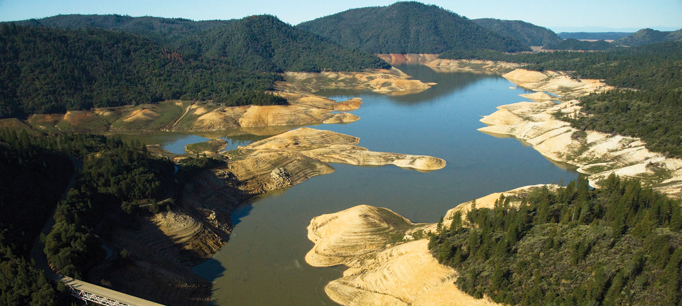This is part of a continuing series on the impact of the drought.
Northern California got a good soaking last weekend, with more than 10 inches of precipitation in many parts. This translated to healthy amounts of water flowing off the hillsides. Much of it is headed into our large reservoirs where—after three years of drought—there will be plenty of capacity to store it for later use for cities, farms, and the environment. But a significant amount made it into rivers in the Sacramento Valley. From there, that water is on its way to the Sacramento-San Joaquin Delta, San Francisco Bay, and ultimately the ocean.
To many, the notion of water to the ocean is akin to water wasted. It is perceived as serving no valuable purpose before mixing with salt water and being rendered useless.
This perception is understandable if we limit our thinking to benefits from direct use of water: manufacturing, industry, drinking, sanitation, or growing gardens and crops. But outside of improving habitat for native species, there are multiple indirect benefits derived from water currently running into the Delta.
The most conspicuous is improved water quality. January’s record low precipitation left the Delta unusually salty. A salty Delta poses problems for the more than 25 million people and more than three million acres of irrigated agriculture that make use of it. Salt is also a problem for farmers in the Delta who rely on local water for irrigation.
To keep the Delta fresh enough for exports and uses in the Delta during dry periods, water has to be released from upstream reservoirs. And a great deal of that released water has to pass through the Delta and into the Bay to keep salt water from encroaching on the Delta. The water used to create this hydraulic barrier cannot be recovered.
A wave of water coming down the Sacramento River freshens the Delta, naturally pushing the salty water out. Depending upon how we operate the export pumps, the effect of this flush can last a long time and allows dam operators to husband their stored water for use later in the year.
Last year, we had three of these flushing events in the late winter and early spring that cleaned up a very salty Delta. These events created benefits—by reducing dam releases necessary to keep things fresh—that lasted into the summer.
Indirect benefits of this water do not end at the Delta. Shorelines and marshes throughout the San Francisco Bay are eroding due to a lack of sediment. This is part of a long-term trend with many causes, but is largely due to the trapping of sediment upstream by dams and levees and a lack of sufficient river flows to move it out of the Delta and into the Bay.
Additionally, as the more than 20 operators of wastewater treatment plants in the Bay Area know, water quality is a major—and potentially very costly—issue of concern, particularly in the South Bay. Freshwater inflows to the Bay help improve water quality and help the Bay meet state and federal standards.
So when you see the brown water from this latest storm moving down the Sacramento River, out through the Delta into the Bay, keep in mind that it is hardly wasted, but rather is creating indirect but vital benefit for a broad range of users.


